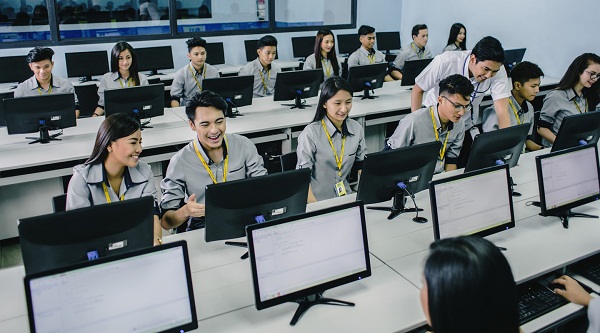It is a story often told and repeated a Filipino goes abroad, finds gainful employment, and makes sure to remit money home primarily to send his or her children to school.
Today, education still remains a top financial priority in Filipino families, according to Monico V. Jacob, Vice Vhairman and CEO of STI Education Services Group Inc., one of the largest networks of academic institutions in the country. He notes that a large percentage of students in the STI system are being sent to school by an overseas worker, whether a parent or other family members. This also shows how families truly value education and how they would exert concert effort just to provide children the opportunity to go to school.

There are also parents who are entrepreneurs running businesses or corporate employees. “Whatever the circumstance, the motivation to work and to earn enough is to see their children through college,” he says.
According to Jacob, education is a great equalizer. “Filipinos have always seen education as an investment in a way that their efforts and resources go into having their children gain opportunities that they never had opportunities to make wise decisions, make a good living, and to ultimately improve the quality of their lives,” explains Jacob.
World-Class IT Education
In 1983, STI was formed to offer information technology (IT) and IT-based education. The founders saw the growing need then for IT-savvy workers and decided to focus on filling this niche. From the start, STI’s philosophy has been “first we teach you, then we hire you,” according to Jacob.
STI expanded very rapidly with its promise of quality education and support for gainful employment after graduation. The expansion was not just in terms of number of schools in various urban centers throughout the country, but also in terms of evolving from a technical-vocational school into a mature tertiary institution.
Aside from its flagship degree in IT, STI now offers degrees in hospitality management, tourism management, business management, computer engineering, and arts and sciences. It also presently has 77 STI-branded campuses and one university. “STI is present in every major urban center and has over 105,000 students enrolled in college and in senior high school,” reports Jacob.
With the government’s recent implementation of the K to 12 program, thereby increasing the number of years of basic education from 10 years to 12 years, STI has also transitioned its campuses into senior high school institutions offering the Department of Education’s prescribed tracks such as accountancy, business, and management (ABM), humanities and social sciences (HUMSS), science, technology, engineering, and mathematics (STEM), information technology, home economics, and industrial arts.
“STI quickly embraced the program knowing that this was a much needed reform that will enhance the competitiveness of the country,” says Jacob.

What Investment In Education Means
Many Filipinos say they view education or schooling as an investment, but what does it really mean? “It is an investment in the future,” explains Jacob. “It is an investment that cannot be quantified, but you can say that the return on this investment is the total development of the individual into a productive and responsible member of the community capable of contributing to the well-being of that community.”
Thus, when a graduate is able to find gainful employment and even reaches a point of giving back to his family, community and country, it can be said that education has brought good returns. “As an investment, it is the task of STI to make sure that the investment does not go to waste,” adds Jacob.
STI, cognizant of this challenge, also pioneered the Enrollment to Employment or E2E System early on in its establishment. STI calls it “a holistic approach to human resource development, which aims to develop ICT-enabled and entrepreneurial professionals through innovative learning and career planning methodologies.” Today, with its growing expertise in many other fields it applies the same approach to its other degree courses.
The E2E system starts with Learning Systems Development, which ensures that STI’s curriculum and programs equip its students with knowledge and skills that are relevant to today’s marketplace. Next, an Academic Delivery System ensures that these are imparted to students in an academic environment that is world-class and state-of-the-art, ably delivered by competent faculty members. The third step, Student Certification, prepares students for employment through assessments, certificate programs, and on-the-job trainings.
Finally, through Job Placement Assistance and proprietary programs like its Interactive Career Assistance Recruitment System (I-CARES), graduates are given the best opportunities to embark on their chosen career. STI also partners with the private sector and international placement agencies for this purpose.
“There are many colleges that offer ‘education’,” states Jacob. “The challenge lies, however, in choosing the right school that puts to good use the hard-earned investment of parents in education—a school that nurtures the student and produces a well-rounded individual who will be a credit not only to himself but also to the community he belongs to,” concludes Jacob.

